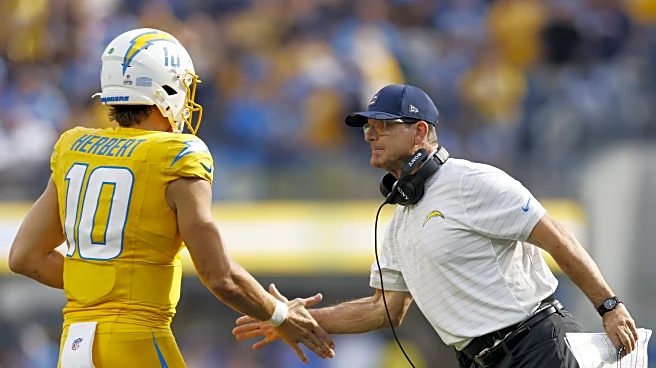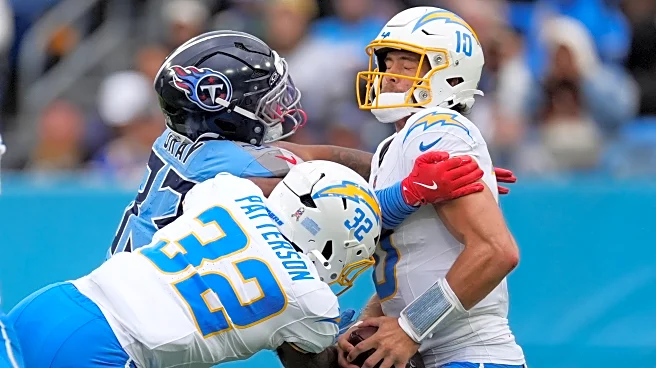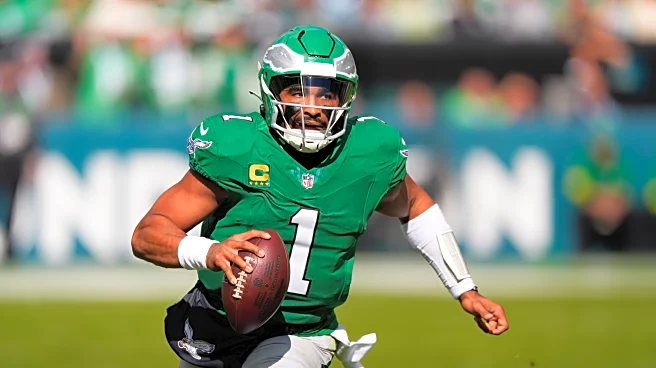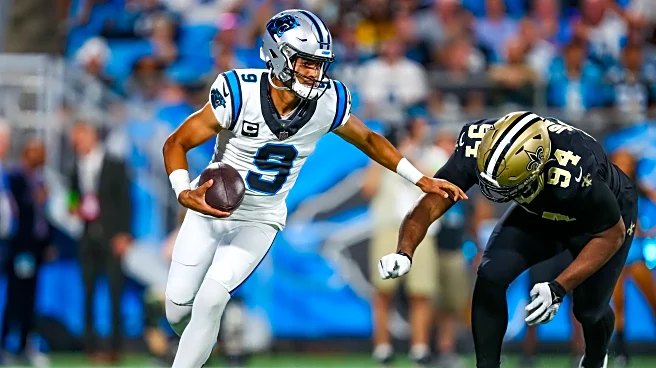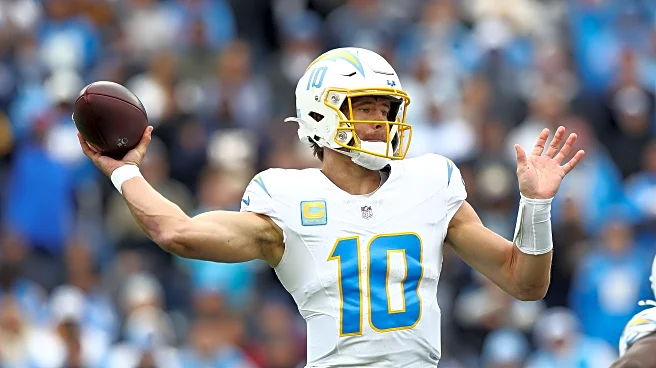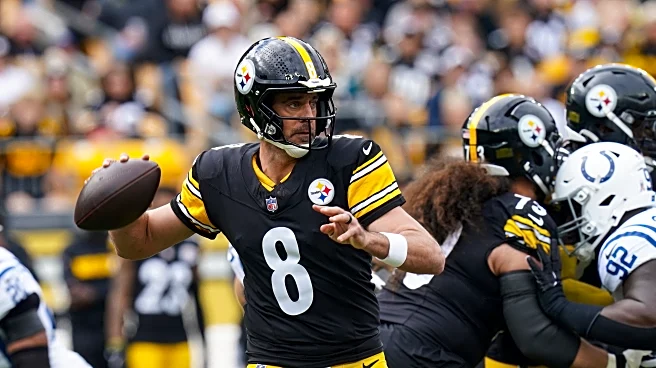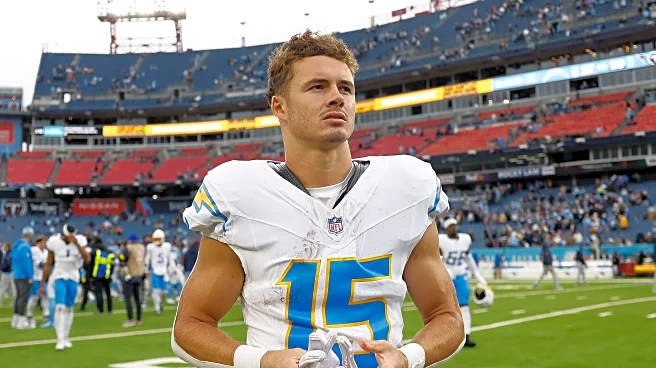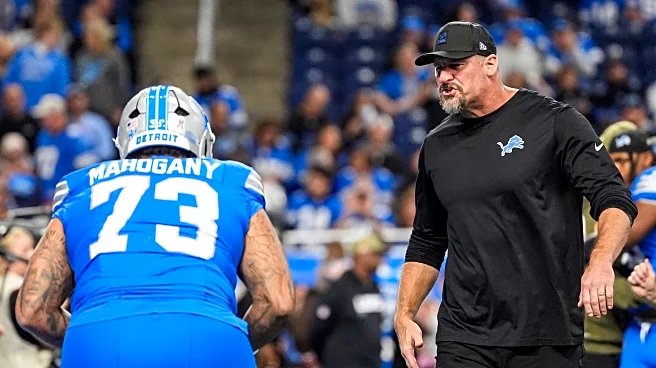The Steelers are back on Sunday Night Football this week, and they’re hoping for a better result as they take on the Chargers on the road in a big AFC matchup.
After defeating the Colts last week, the 5-3
Steelers are hoping to continue to establish their status as a legitimate threat in the conference. The Chargers, at 6-3, need to keep stacking wins in a competitive AFC West as they navigate offensive injuries that are piling up.
What to expect from the Chargers’ offense

Rushing YPG: 124.0 (10th)
Passing YPG: 250.6 (6th)
PPG: 23.9 (17th)
RB: The Chargers offense is top 10 in both rushing and passing yards per game, but only 17th in points. That should tell you that it’s a dangerous unit, but not exactly some unstoppable force.
The biggest threat on the Los Angeles offense by far is Justin Herbert, one of the best at his position in the NFL and a rare athlete at his position.
We’ll get to Herbert’s passing ability in a bit, but what he can do as a runner often flies under the radar. Mike Tomlin even noted this week that the Steelers had an easier time defending him last year because Herbert lacked some mobility due to an injury.
Herbert actually has 305 rushing yards this season – just one behind his current career high – and the most of any NFL quarterback so far this season.
Herbert running more has been a stylistic shift in the offense, but also out of necessity given the injuries the Chargers have suffered at running back. Rookie first-rounder Omarion Hampton and free agent signing Najee Harris remain out with injuries, leaving 2024 sixth-rounder Kimani Vidal as the lead back at this point in the season.
Vidal has been fine so far, but he couldn’t create much when the Chargers offensive line struggled to create holes against the Titans last week.
The LA ground game is largely an in-between the tackles affair with a dose of gap runs, although Vidal has found success bouncing runs outside for chunk gains this year. Discipline will be important for the Steelers defense on Sunday.
The Chargers also use fullback/defensive lineman Scott Matlock quite a bit. Against the Titans last week, he saw 28 offensive snaps and three on defense per PFF. At 6’4, 289 pounds, he’s a people mover who the Chargers like to put in motion presnap. He can also serve as an extra pass protector (and he even caught a touchdown last week).
Like at running back, the Chargers have struggled with health on the offensive line. Starting left tackle Rashawn Slater suffered a season-ending injury in August, and starting right tackle (filling in at left) Joe Alt followed suit in the Chargers’ win last week with a season-ending ankle injury.
Now down their best two lineman – and free-agent guard Mekhi Becton also missed last week against the Titans – the Chargers’ O-line has devolved into one of the worst in the NFL.
And the problems predate most of the injuries. Per Next Gen Stats, the Chargers have allowed the most pressures in the NFL this season with 166 – 22 more than the second-place Jets – and the second-highest pressure rate at an ugly 43%. Herbert was sacked six times against the Titans last week
Even before the Alt injury, it was a rough group to watch, with the interior of the line getting overpowered constantly. And now, LA is down one of the top tackles in the NFL.
Making the problem better and worse is Herbert’s pocket presence. He’s absolutely willing to hang onto the ball, stand strong, and take hits if it means giving himself enough time to find an open target downfield. Add in his mobility and an arm that can make throws in any situation, and defenses can see sure sacks turn into chunk plays.
I don’t think you can overstate just how unreal Herbert is as a passer.
However, the Chargers currently have the fifth-longest time to throw in the NFL at 2.91 seconds. Some of it is scheme; some of it is Herbert, but the big-play hunting can leave an already short-handed O-line high and dry in pass protection.
Herbert is also tied for the third-most interceptions in the NFL this season, with eight so far this year. That’s the price of being a gunslinger, but it is good news for a Steeler defense that is at its best when creating takeaways.
In the passing game, the Chargers use a lot of play-action and love deep crossers, where they’ve seen a lot of big plays this season. Ladd McConkey is the top talent, a multi-level threat who really only lacks the traditional size of a WR1.
Herbert also reunited with an old friend this season, with Keenan Allen returning to the Chargers in 2025. Allen already has 520 receiving yards this season, and while he isn’t his old self, he still has great chemistry with Herbert, good hands, and a savvy for getting open.
Closing out the LA wide receiver trio is former first-rounder Quentin Johnston, who has slowly developed from flirting with bust status to becoming a solid role player in the Chargers offense.
While I wouldn’t put the two players in the same category, Johnston is sort of a poor man’s D.K. Metcalf – great size and speed but far from a contested catch threat. Still, he’s a fantastic linear athlete who gets open on drags and deep routes. He was the recipient of this gorgeous Herbert touchdown pass last week:
But the biggest rising star on the Chargers’ offense has been rookie tight end Oronde Gadsden II, an athletic target whose production has exploded in recent weeks – he hasn’t dropped under 65 receiving yards since Week 5.
That’s why – even with the O-line struggles – Herbert and his group of pass-catchers can still cause problems for defenses.
And it’s worth noting that although the Chargers’ run game slowed down last week, they’re still a top-10 group overall. It’ll be interesting to see how they hold up against the Steelers without Alt on Sunday. And on the injury front, Becton is still limited to start the week with a knee injury.
Due to the Chargers’ offensive line woes and long time to throw, this is an offensive matchup that generally plays into the Steelers’ strengths. Pittsburgh is built to get sacks and turnovers, and both have been problems for LA this year.
However, Justin Herbert is that good. It should be a battle on Sunday.
What to expect from the Chargers’ defense

Rushing YPG Allowed: 109.7 (17th)
Passing YPG Allowed: 177.1 (3rd)
PPG Allowed: 21.4 (T-11th)
RP: When sizing up the Steelers’ opponent on the other side of the ball, the Chargers seem to fall into the category of “very good” but not “elite.” Casual fans will recognize a couple of former All-Pros in edge rusher Khalil Mack and safety Derwin James Jr., but the rest of the Los Angeles defense is made up of a cast of relatively unheralded characters, at least nationally.
While the Chargers may not quite be filled with household names, what they do have is a lot of players fulfilling their roles admirably and consistently. Not only that, but the Chargers pair their roster with a track record of tough, sound defenses under his watch, and a sharp, up-and-coming defensive coordinator, who is already a hot name as a future NFL head coach.
That coaching duo of Jim Harbaugh and defensive coordinator Jesse Minter has worked together since 2022, when the latter was hired for the same position at the University of Michigan. Prior to that, he had worked with the other Harbaugh, Jim, and the Baltimore Ravens from 2017-2020. During his time in Baltimore, Minter advanced from defensive assistant to defensive backs coach.
Knowing that context gives some insight into what kind of defense the Chargers, and this particular pair of coaches, have created. The Chargers are a defensive back-focused team, not that dissimilar from the Ravens. That makes sense given the Harbaugh family ties of it all. Minter, having worked for both Harbaugh brothers, has essentially been adopted into that family.
All that goes to say, the Chargers run a base defense at the fourth-lowest rate (17.2%) in the entire NFL and use nickel (53.6%) or dime (28%) a combined 81.6% of the time. The Chargers have run the second-most plays from the dime this season (140), trailing only the Rams (177).
To clarify for anyone new to some of this terminology, a nickel package features five defensive backs and a dime package features six. A base defense — whether it features three linemen (3-4) or four (4-3) — has just four defensive backs on the field.
That leads us to the one “weak” spot for the Chargers: run defense. The Chargers have fluctuated in the league’s middle ranks against the run. That’s in large part because the personnel the Chargers tend to deploy are geared more for stopping the pass than the run. That strategy has Los Angeles among the league’s best against the pass, but also presents mismatch opportunities for opposing offenses built to run the ball.
Still, I don’t want to give the wrong impression. The Chargers aren’t a team that you can just simply line up and run over. They are middle of the pack as run defenses go, with their one susceptibility being the amount of explosive runs they allow, which can obscure stats that show how effective they are from down to down.
Taking out QB runs and scrambles — which I can promise we won’t see much of from Aaron Rodgers — and the Chargers have allowed a running play to gain 10-plus yards 22 times. That’s an average of less than three times a game. Still, on those runs, they’ve allowed 417 rushing yards, which accounts for 42.2% of the rushing yardage they’ve allowed on the season.
It’s a perfect example of how football is a game of inches and margins. Those 22 plays are just 10.9% of the run defense snaps Los Angeles has played this year, but it’s the difference between them allowing 4.9 ypc (27th) on the season and allowing 3.2 ypc on the 179 other snaps against the run.
The Steelers have 19 runs of 10-plus yards on the season (30th). To take advantage of this Chargers team, they need to make sure they stay ahead of the chains, and if they can muster some explosive runs, that would go a long way.
That may be a tough order with guard Isaac Seumalo not practicing so far this week. Spencer Anderson filled in for Seumalo after he left with a pectoral injury and would presumably do so again. Unfortunately, that would eliminate the jumbo packages with six offensive lineman from the playsheet, unless the Steelers believe in one of their depth pieces to fill in, something they didn’t do after Seumalo’s departure in Week 9. Tight end Darnell Washington also popped up on the injury report on Wednesday with a foot injury, but thankfully was a full participant on Thursday.
In coverage, the Chargers are a zone-heavy team. They are among the teams that run man concepts the least, just 13% of the time. That’s similar to another Harbaugh coaching tree member: Mike Macdonald’s Seahawks defense (14%).
And much like that Seahawks defense the Steelers faced earlier in the season, the Chargers are pretty good at causing chaos for their opponents.
I mentioned at the top that the Chargers don’t have many nationally recognized defensive stars, but they are a well-coached unit that is greater than the sum of its parts. They have the ability to suffocate opposing teams with zone, allowing enough time for their pass rushers to get home. Los Angeles is tied for sixth in sacks (26), just one less than the Steelers on the season. They’re eighth in average time to create pressure (2.57 seconds). The Steelers, for comparison, are tied for third (2.52).
A majority of those sacks (21) are split between five players:
- Tuli Tuipulotu – 7
- Odafe Oweh – 4
- Justin Eboigbe – 4
- Kahlil Mack -3
- Daiyan Henley – 3
Tuipulotu is severely underdiscussed on the national stage for what he brings to the Chargers. He plays with both speed and power and is both deadly against the pass and run.
Another major force in the Chargers’ pass rush is a familiar face: former Raven Odafe Oweh. He’s been on an absolute tear since being traded earlier this season.
Historically, the Steelers have done fairly well at containing Oweh. Drafted in 2022, Oweh only managed two sacks of Pittsburgh quarterbacks during his Ravens career, both coming in Week 11 of last year. He looks like a different player since getting to Los Angeles, and Broderick Jones will need to be on his “A” game if he wants to slow down the heater Oweh has been on.
And of course, there is still Khalil Mack to deal with, one of the best pass rushers of his generation. The Chargers feared they had lost Mack for the season when he was injured in Week 2, but after a short stint on the IR, he was able to return in Week 7 and has had two sacks since his return.
And the ever-versatile Henley is a terror when blitzed as well. Not to mention he’s made of tougher stuff than most of us.
On the backend of the defense, Derwin James Jr. remains the leader and heartbeat of the secondary. His versatility is one of his greatest assets as a defender.
As a group, the Chargers’ secondary has been excellent:
- S Derwin James – 31 targets, 20 receptions allowed, 191 yards, 0 TDs, 1 INT, 68.1 passer rating
- CB Tarheeb Still – 26 targets, 16 receptions, 131 yards, 0 TDs, 74.4 passer rating
- CB Donte Jackson – 26 targets, 13 receptions, 136 yards, 1 TD, 1 INT, 62.3 passer rating
- S Elijah Molden – 8 targets, 3 receptions, 76 yards, 0 TD, 72.9 passer rating
- S Tony Jefferson – 13 targets, 6 receptions, 102 yards, 0 TD, 2 INT, 33.7 passer rating
- CB Cam Hart – 35 targets, 21 receptions, 300 yards, 1 TD, 97.3 passer rating
- CB Benjamin St-Juiste – 23 targets, 13 receptions, 203 yards, 2 TDs, 1 INT, 96.8 passer rating
- S R.J. Mickens – 4 targets, 1 reception, 6 yards, 0 TD, 1 INT, 56.3 passer rating
It should be noted that the Chargers’ secondary has been banged up recently. Hart should return after missing last week with illness. Jefferson missed last week with a hamstring injury and has been limited on both Wednesday and Thursday. Tarheeb Still also missed the last game and has not participated this week with a knee injury.
Those injuries are partly why St. Juiste has seen an uptick in snaps in recent weeks. He remains a player that Rodgers should have a bullseye on all game.
As noted in the chart earlier, the Chargers run a lot of zone. Most notably, they run Cover 3 (35%) and Cover 4 (25%) a majority of the time.
If you’re terminally online, you would have seen the discourse this week about whether you can beat quarters over the top. How that got started isn’t really important, but let’s just let one of the greats explain how you beat this look. And keep your ears peeled for a hometown shout-out.
Pittsburgh will need to find success against the fierce Chargers pass rush if they want to be able to hit that deep post. Rodgers hasn’t attempted many deep throws this season for a reason, but if the Steelers find themselves holding up in pass pro, this might be a week where we could see an explosive downfield play. If not, the Steelers should still target the middle of the field and exploit the linebackers and the weakness of that coverage look, especially Perryman or sub Troy Dye when they’re on the field. Another option is to attack the sidelines with concepts like quick outs. They could also use 3×1 formations to overload the defense to one side and create a better matchup for one player — say DK Metcalf or Pat Friermuth.
If there is another weakness in the Chargers, they struggle to turn the ball over. On the season, Los Angeles has eight takeaways, ranked 23rd in the NFL.
On paper, the Steelers should match up well with the Chargers. If Pittsburgh can get its run game going, keep Aaron Rodgers upright and on schedule, and play turnover-free ball on offense, they should have all the tools necessary to move the ball on these Chargers.
But if they don’t come correct — whether that’s blowing blocking assignments early in the series, committing drive-stalling penalties, or getting sloppy with the ball — the Chargers are the type of defense that can make the Steelers beat themselves.
